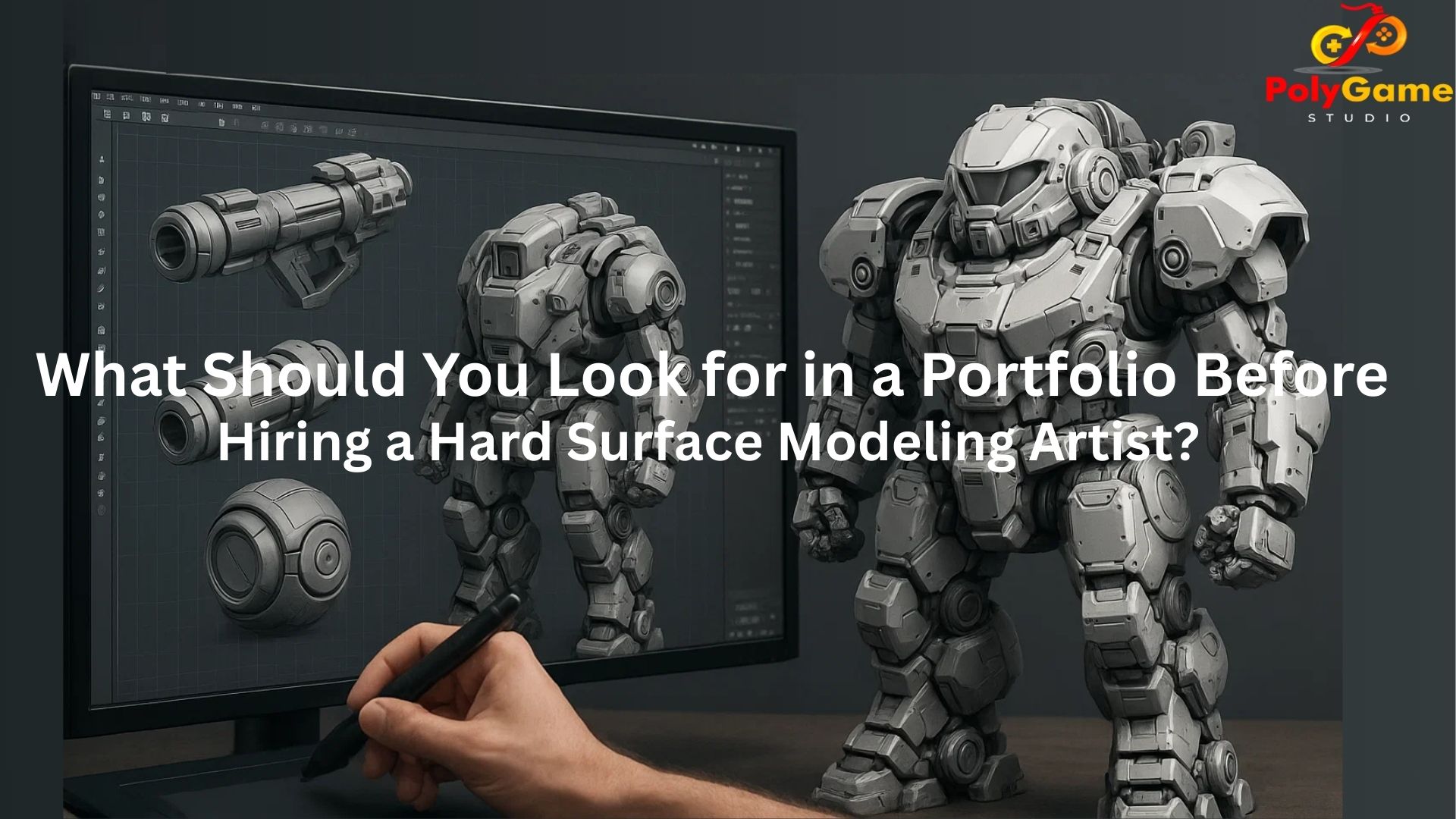Dodging the Digital Pitfalls What Common Mistakes Should You Watch Out for in 3D Character Modeling for Games?
Creating a compelling 3D Character for Game is an intricate dance between artistic vision and technical precision. From the initial concept sketch to the final game-ready asset, every stage requires meticulous attention to detail. Understanding below given prevalent mistakes in 3D Character Modeling is crucial for ensuring your digital personalities truly shine in the virtual world.
1. Don’t Overlook Topology and Edge Flow (The Key to Animation)
Perhaps the most critical, yet often overlooked, mistake in 3D Character Modeling is neglecting proper topology and edge flow. For smooth animation and proper shading, good 3D character topology relies on three principles: clean quads for easy deformation, logical edge loops flowing naturally around joints and facial features for realistic movement, and optimal density for sufficient polygons where deformation is crucial, but not overly dense elsewhere.
Mistake: Messy or extreme low/high polygon topology and edge flow inevitably leads to poor 3D character outcomes.
Impact: Leads to jagged, unnatural animations, unsightly pinching or stretching during movement, difficulty for animators, and potential performance issues in-game. A visually stunning 3D Character for Game becomes unplayable or looks broken in motion.
2. Ignoring Scale and Proportions (The Believability Aspect)
Paying close attention to scale relative to the environment and other characters, as well as their internal proportions.
Mistake: Building a character that is too large or too small for the world, or has anatomical proportions that are clearly off (e.g., overly long limbs, disproportionately small heads, misplaced features).
Impact: Breaks immersion immediately. The 3D Character for Game might clip through doors, feel too slow/fast for the world, or simply look “wrong.” Bad proportions make a character unbelievable, regardless of how high-fidelity the textures are. This is a fundamental flaw in 3D Character Design.
3. Lacking Good UV Unwrapping and Texture (The Major Appearance Flaw)
Lacking good UV unwrapping and proper textures significantly degrades a 3D model’s visual quality.
Mistake: Sloppy UV layouts with excessive stretching, overlapping islands, or poorly placed seams.
Impact: Textures appear distorted, blurry, or stretched in-game. Visible seams ruin the continuous surface illusion and make it look raw and unpolished.
4. Neglecting Normal Maps and Baking Workflow (The Illusion of Detail)
Modern game characters rely heavily on normal maps to simulate high-poly detail on low-poly meshes. This involves baking details from a high-resolution sculpt onto a lower-resolution game mesh.
Mistake: Incorrectly baking normal maps, leading to shading errors, artifacts, or “popping” details. Not creating a high-poly sculpt to bake from, or simply relying on raw geometry for all details in a real-time 3D Character for Game.
Impact: The character loses fine surface details like wrinkles, pores, or clothing folds. It can look flat, plasticky, or chunky, significantly reducing the visual quality that 3D Character Modeling aims to achieve.
5. Inconsistent Art Style (The Visual Clutter)
Whether it’s realistic, stylized, cartoony, or cel-shaded, every 3D Character for Game should look like they belong together.
Mistake: Creating characters that clash with each other or the environment’s established aesthetic. This often happens when different artists work on characters without a strong central art direction.
Impact: The game world feels disjointed and unprofessional. It shatters immersion when a highly realistic character stands next to a super-deformed one, or when a vibrant, colorful character is placed in a grim, monochromatic world. This is a major oversight in 3D Character Design.
6. Ignoring Game Engine Limitations and Optimization (The Performance Killer)
While artists naturally want to create the most beautiful characters possible, game engines have limits.
Mistake: Creating models that are too high-poly, use too many draw calls, or have overly complex shaders for the target platform’s capabilities. Not managing texture memory effectively.
Impact: Poor frame rates, crashes, slow loading times, and a generally frustrating player experience. A gorgeous 3D Character for Game means little if the game grinds to a halt every time they appear.
Recommended to read – 3D Character Design
7. Lack of Collaboration with Riggers and Animators (The Pipeline Bottleneck)
3D Character Modeling is rarely a solo act in professional game development. It’s part of a larger pipeline, and characters must be built with the next steps (rigging and animation) in mind.
Mistake: Creating a model that is difficult to rig due to bad topology or unforeseen geometry issues. Not considering articulation points or the range of motion needed for animations.
Impact: Significant delays and costly rework for the rigging and animation teams. A character that looks great in a static pose might be impossible to animate convincingly, leading to a stiff or unnatural performance in-game.
PolyGame Studio: Your Partner for 3D Character Modeling for Game
At PolyGame Studio, we understand that avoiding these common mistakes is paramount to creating exceptional 3D Character Modeling assets. Our experienced team doesn’t just focus on visual appeal; we prioritize technical excellence and pipeline efficiency from concept to completion. From precise UV unwrapping and expert normal map baking to robust optimization for your target platform, we handle every detail of 3D Character Modeling with precision. We pride ourselves on our meticulous 3D Character Design process, ensuring every character we create enhances your game’s immersion and narrative.
Conclusion: Precision, Planning, and Practice
Avoiding common mistakes in 3D Character Modeling for games boils down to a combination of precision, planning, and continuous practice. It’s about understanding that a truly great 3D Character for Game isn’t just a pretty sculpt; it’s a technically sound, performance-optimized, and animation-ready asset that contributes meaningfully to the overall player experience. By watching out for these pitfalls, artists can ensure their digital creations not only look the part but also play the part, becoming cherished figures in the hearts of players worldwide.








